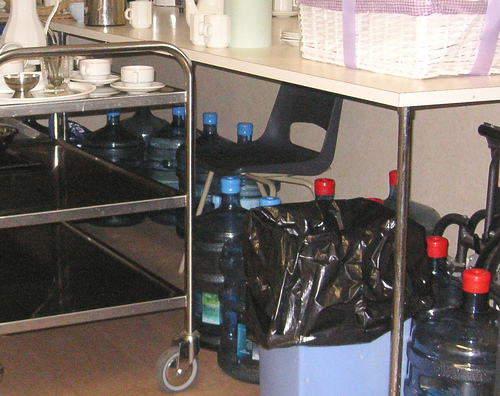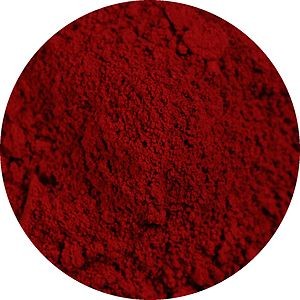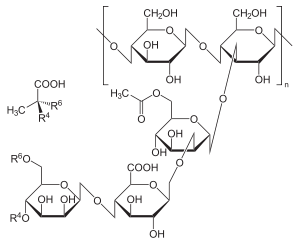As common as these ingredients are, they’re not exactly what you would expect. Some are not even what you would WANT to expect. For all the times your mother asked, “Do you know what’s IN that?”, you’ll be armed and ready with the answers. And the nausea that probably accompanies them.
See our list to get started.
No. 1 – Carmine
Carmine, or cochineal (as it is perhaps more commonly known), consists of a mixture of … crushed beetles. More specifically, these dried insects are boiled in water to extract the carminic acid they contain (or did contain). Typically, due to the fantastic red hue the resulting potion gives off, this ingredient is used to artificially dye foods red, purple and pink; however, you can taste these little buggers in some fruit juices, berry punches, ice cream, yogurt and candy (so ya know, all the good stuff).
In terms of non-edible items that contain carmine, you’ll see them in everything from ink to paint to make-up. We’d say we hope that doesn’t include lipstick, but hey, you’re already ingesting the stuff in everyday foods — gives new meaning to the phrase, “Waiter, there’s a fly in my soup.”

 No. 2 – Xanthan Gum
No. 2 – Xanthan Gum
Well, if nothing else, “xanthan gum” offers you an alternative to “xylophone” when coming up with words that begin with an X. You’re welcome.
Xanthan gum, which gets its name from Xanthomonas campestris (a strain of bacteria present during the fermentation process), contains bacteria similar to rotting veggies. We wish that was a joke and/or exaggeration, but it’s totally not. In fact, when you think of molding veggies, it’s fairly easy to imagine the film of slime forming. Yep. Like that layer of decay, xanthan gum acts as a thickening agent or a gel. Yum!
You can see xanthan gum in dairy products, sauces and salad dressings. As if the previous paragraph wasn’t enough to put you off of salad forever, now you have the perfect excuse to order that burger instead.

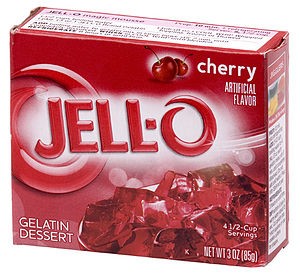
No. 3 – Gelatin
Next time that frat guy offers you a Jell-O shot, consider this: Jell-O’s main ingredient, as I’m sure it’s easy to imagine given the name, is gelatin. But gelatin, for those who don’t know, consists of the collagen extracted from an animal’s skin and (mostly) bones. So if you’ve ever been told Jell-O is made of “horse hooves,” you’re partially correct (though actual hooves are not used in the production process). And also probably partially nauseous.
But if you think it’s just Jell-O shots you should be avoiding, you’re sadly mistaken … you can find gelatin in everything from Gummy Bears to those marshmallow Peeps you get on Easter Sunday. Now perhaps it seems a wee bit less ridiculous when your vegetarian friends turn down the pastel-colored cuties, because (to you’re thinking) they’re “animals.” Uh, well. Yeah, they are actually.”

No. 4 – Sorbitol
As anyone on the Atkins diet will tell you, sugar alcohols are your friend. More specifically, one of your BFFs — because they bring your net carb count down.
However, sorbitol, like many of the other common sugar alcohols, can actually be more like a frenemy when you hang out too often. You see, sorbitol, when consumed in mass quantities, acts as a laxative — proving the adage “too much of a good thing.”
Where do you see sorbitol hanging out? You can find S-tol in sugar free mints, medicines, gums and diet sodas. Of course, that’s barely scratching the surface … you’ll also see it listed as an ingredient in your make-up, mouthwash, toothpaste and even in some cigarettes.
With all the things that you can see S-tol in, it certainly deems it the breakfast of champions. Or at least, the breakfast of champions who may be backed up.

No. 5 – Phosphoric Acid
Phosphoric Acid is more commonly known as the substance that gives soda its acidity.
To quench your thirst, consider this: phosphoric acid is also used to remove rust, in some cases employing what is called an “acid bath” (think “DIP” from Who Framed Roger Rabbit? and you’ll understand).
If that’s not enough to keep you out of Toon Town, phosphoric acid is also used in fuel cells, to remove hard-water stains, and as a pH balancer in your favorite cosmetics, ladies.
Hazards to your health have never tasted so sweet. I mean, bitter.

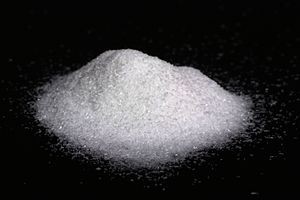
No. 6 – Monosodium glutamate (MSG)
It’s not just your local Chinese take-out ingredient anymore!
Monosodium glutamate, or MSG, is actually a really cool ingredient, even if it does cause some pretty nasty side effects for some people. You see, some scientists believe that glutamate, also known as “umami,” is the fifth “essential” flavor detectable by the human palate (the others are salty, sweet, sour and bitter — so basically every emotion you’ve had toward an ex). In fact, glutamate doesn’t have a taste on its own, and is best known for bringing out the flavors of other things (like sesame chicken … mmm!).
Despite years of complaints of “Chinese food syndrome” however, (which does NOT imply that the sufferer is hungry again just 20 minutes after consumption, but that it makes the person physically ill), most of those negative claims that MSG is harmful to your health have gone largely unsubstantiated. And while scientists have discovered there are those who are allergic to the substance, the allergy itself is pretty rare.
Oh good, here’s your fortune cookie fortune: “You will read an amazing Top 10 List today.” Wow! How do they do that?


No. 7 – Carrageenan
You may know that carrageenan is a common additive used in ice creams, soy milk, toothpastes — even beer; what you probably don’t know is that this common ingredient is made of a substance extracted from seaweed. That’s right, you’re eating sushi even when you didn’t expect it … in a manner of speaking, anyway.
What you may also be unaware of is carrageenan’s ability to pull double duty. Studies have shown that lubricants containing the special substance MAY have the ability to block myriad STDs (HIV excluded), meaning you can literally double your pleasure, double your fun — specially if we’re talking about a total pig-out on the aforementioned ice cream and beer.
Sounds like every party can use a little carrageenan.

 No. 8 – Caffeine
No. 8 – Caffeine
Without this common ingredient, most of these Top 10 lists would never get done! Therefore, thanks largely to coffee and Red Bull, it’s a safe bet that No. 8 in our list can be found in most people’s tummies. And we have a sneaking suspicion overuse of this common ingredient is exactly what makes us so weird (wired?).

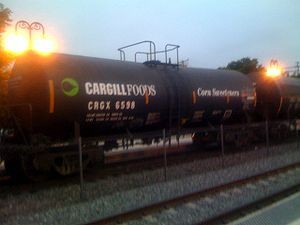
No. 9 – High-Fructose Corn Syrup
Kid tested, mother dis-approved.
Remember when your mothers taught you that high-fructose corn syrup was the devil and that it brought evil upon any child to consume it? Well, maybe that was just our moms. But hey, television argues it too! You see, in the old days (and by the old days, we mean the 1980s), admitting something had “sugar” in it was one of the seven deadly sins (the beginnings of gluttony, perhaps). It wasn’t until high-fructose corn syrup (HFCS) hit the shelves that people got really confused, and therefore threw money at the problem! Today, however, we’re giving you the not-so-skinny on this substance, right here, right now.
In case you hadn’t heard, HFCS is essentially sugar — more specifically a corn syrup that has undergone enzymatic processes to increase the level of fructose (how they came up with the name for it we will NEVER know!). However, along with the high fructose came high levels of obesity; around the same time as HFCS was introduced to the U.S., obesity levels rose steadily. Subsequent tests have found that “fructose” tends to cause this weight gain, meaning the sugar substitute sent to save the day might have made things worse. Oops.
Aw, shucks. Now we have to admit our moms were right.

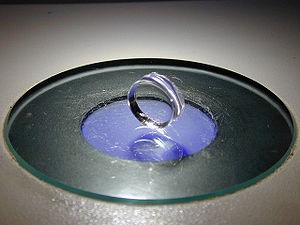
No. 10 – Polydimethylsiloxane
Polydimethylsiloxane, or PDMS as we will call it from here on out, is indeed a common food ingredient … you’ll even find it at your favorite fast-food haunts (we would name them, but we’re pretty sure you’ll never go back, and we think their Seven Layer Burritos are definitely worth frequent visits … oops!).
Aside from its use as a food additive, other interesting places you’ll find PDMS include Silly Putty, anti-foaming agents, breast implants, dry-cleaning solutions, silicone and head-lice treatments. Hey, we never said it was a cohesive list! Which reminds us … it’s also a bonding agent. Is there anything PDMS can’t do?

